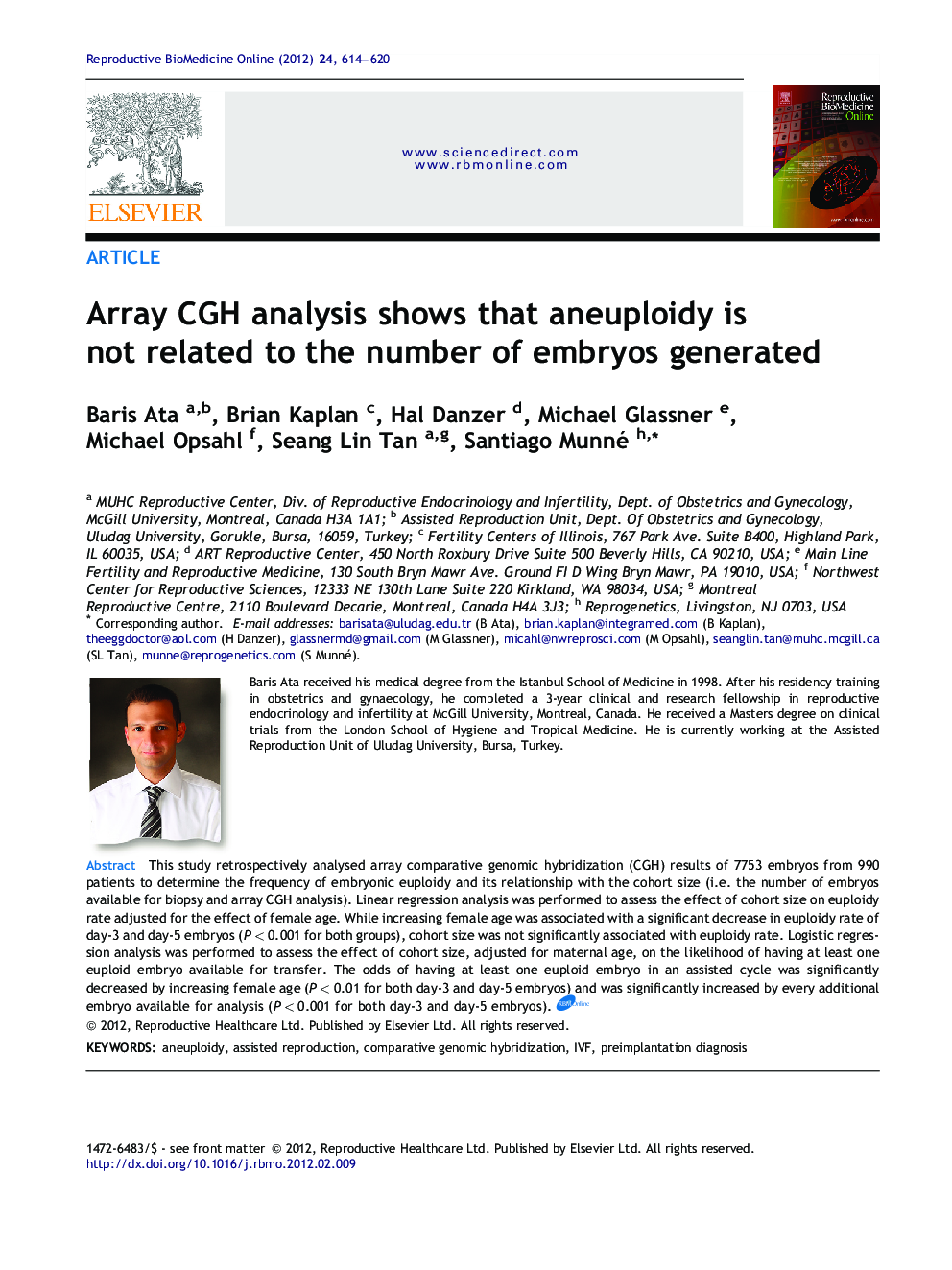| Article ID | Journal | Published Year | Pages | File Type |
|---|---|---|---|---|
| 3970821 | Reproductive BioMedicine Online | 2012 | 7 Pages |
This study retrospectively analysed array comparative genomic hybridization (CGH) results of 7753 embryos from 990 patients to determine the frequency of embryonic euploidy and its relationship with the cohort size (i.e. the number of embryos available for biopsy and array CGH analysis). Linear regression analysis was performed to assess the effect of cohort size on euploidy rate adjusted for the effect of female age. While increasing female age was associated with a significant decrease in euploidy rate of day-3 and day-5 embryos (P < 0.001 for both groups), cohort size was not significantly associated with euploidy rate. Logistic regression analysis was performed to assess the effect of cohort size, adjusted for maternal age, on the likelihood of having at least one euploid embryo available for transfer. The odds of having at least one euploid embryo in an assisted cycle was significantly decreased by increasing female age (P < 0.01 for both day-3 and day-5 embryos) and was significantly increased by every additional embryo available for analysis (P < 0.001 for both day-3 and day-5 embryos).Array comparative genomic hybridization (CGH) enables assessment of the entire chromosomal component of human embryos, which was not possible with the formerly used preimplantation genetic diagnosis (PGD) technology. We analysed array CGH PGD results of 7753 embryos from 990 women to determine the frequency of embryonic euploidy and its relationship with the number of embryos available for biopsy (hereafter called cohort size) in an assisted reproduction cycle. While increasing female age was associated with a significant decrease in euploidy rate of day-3 and day-5 embryos (P < 0.001 for both groups), cohort size was not significantly associated with euploidy rate. Logistic regression analysis was performed to assess the effect of cohort size, adjusted for maternal age, on the likelihood of having at least one euploid embryo available for transfer. The odds of having at least one euploid embryo in an assisted cycle was significantly decreased by increasing female age (P < 0.01 for both day-3 and day-5 embryos) and was significantly increased by every additional embryo available for analysis (P < 0.001 for both day-3 and day-5 embryos). In conclusion, increasing the number of embryos available in a conventionally stimulated cycle increases the chance of having an euploid embryo available for transfer.
